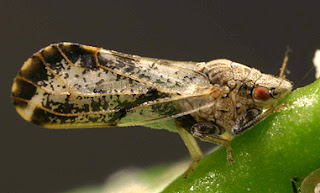Postharvest Produce Program
 |
|
Participants in the Produce Professional Safety Program at UC Davis
Photo by Penny Stockdale, UC Davis Post Harvest Technology Center.
|
 |
|
Participants in the Produce Professional Safety Program at UC Davis
Photo by Penny Stockdale, UC Davis Post Harvest Technology Center.
|
This course is designed for produce recall teams for companies throughout the produce supply chain including Growers/Shippers/Packers, Processors, Wholesalers & Distributors, Retailers, Restaurant Operators and Industry Organizations (including commodity boards and associations).
At the very least, your recall team should include management, technical staff and marketing/communications staff. In addition, United Fresh recommends attendance by Operations Staff, Food Safety Staff, Q&A Staff, Customer/Member Services Representatives, and your company Crisis Management Team.
For more information please contact: Erin Grether, Government Relations Coordinator, United Fresh Produce Association, at (202) 303-3400 or egrether@unitedfresh.org, http://www.unitedfresh.org/recallready
 |
| Mario Santoyo, Director of the California Latino Water Coalition. |
“There is no question this is an emergency situation now,” Santoyo clarified. “We constantly hear about the long-term solutions including the twin tunnels, but they won’t be built for ten years.”
 |
| Adult Asian Citrus Psyllid Feeds on Citrus, with immature nymphs nearby. |
“These government agencies are not currently requesting growers to spray; they are not requiring growers to do anything.”
 |
| Manuel Cunha, President of Nisei Farmers League, Fresno. |
Recently, marijuana has been found on rangelands on the West Side. Furthermore, a high profile bust happened in southeast Fresno where the crop was planted among two acres in a carved-out area of a cornfield. During the raid by the Fresno County Sheriff Department, a suspect, a reputed gang member, was found with a gunshot wound, after an exchange of gunfire from a vehicle that had apparently just sped by the scene.
| Bacterial Spot Causes Lesion on hulls. |
Over the past few years, we have observed these symptoms at about the same time in mid-April to early May. The damage looked similar to leaffooted bug (LFB-Leptoglossus clypealis) or anthracnose symptoms. Concern was raised when ‘Fritz’ containing orchards sprayed proactively three times for LFB or anthracnose again experienced the same symptoms.
| Amber gum flows from the hull spots. |
Symptoms of infected nuts include the production of amber colored gum from spots on the hull (Figure 1). Cutting into the hull, there is no presence of LFB feeding, but there is a lesion about the size of a pencil eraser (Figure 2). Lesions may enlarge, become sunken and orange in color, or exude an orange slime similar to anthracnose symptoms. Leaves may show spots (Figure 3), turn yellow, and drop prematurely. Twigs may show visible lesions or cankers (Figure 4), which may be a source of overwintering inoculum. Infected nuts may stick on spurs and be found in close proximity to mummy nuts from the previous year, still showing dried up lesions (Figure 5).
 |
| The Asian Citrus Psyllid. It’s 1/8 inch long. |
Kevin Severns, is a Sanger, California Citrus grower and general manager of Orange Cove-Sanger Citrus Association. He also serves on the Citrus Pest and Disease Prevention program.
 |
| Andrew Vargas and his father Arnaldo may have to quit farming if there a zero allocation of water next season. |
 |
| Marty Acquistapace is worried about the damage the well water with high salts and boron is causing to his trees. |
Marty Acquistapace has been farming 2,200 acres of almonds for Blackburn Farming Co., and its almond processor, Silver Creek Almond Co., all west of Mendota. Acquistapace joined the company eight years ago, when water was more plentiful. Due to the 2009 first biological opinion in 2009, water allocations started at an unprecedented zero, but following the historic water march it was raised to 10 percent in Westlands Water District. Then came 2010, 2011, and 2012 all at 40 percent allocations.